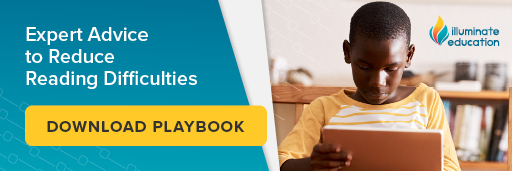6 Strategies for Effective Writing & Reading Instruction
Literacy is a foundational part of our personal and professional lives. Adult educators have internalized much of the reading and writing process. But these tasks often feel nebulous to students. Why is this the case? Unlike solving a math problem, we can't always break down reading and writing into clear steps.
Teachers may struggle to find strategies to help students improve at literacy. So, they end up assigning reading and writing, instead of teaching reading and writing.
Learning to understand a poem or structure an argumentative essay is a challenge. That said, there are principles that teachers can apply to their instruction. These principles can help to maximize the effectiveness of their literacy instruction.
The ideas that follow are not a quick fix. They are a menu of options that teachers can include, when appropriate, to make the best of their lessons.
Reading Strategies:
Think Aloud
Teachers often forget all that goes into understanding a text. Developing readers don't know the mental work required to turn the words on the page into meaning. This opens up an opportunity for teachers to model their thinking process for the class in a “Think Aloud.” This is when the teacher reads a text aloud, pausing to explain her thoughts. It might sound something like this:
Here, at the beginning of the novel, I noticed that the main character is reflecting on her experience from high school, even though she is now thirty years old. This makes me wonder why the author has chosen to have the older version of the narrator tell the story, and why this time from teenage years is important to this now older woman.
Thinking aloud requires practice, and it’s alright if it doesn’t succeed the first time. In fact, it’s good for students to see teachers struggle. This shows students that everyone can struggle with comprehension.
Set a Purpose
This point refers to teaching whole class texts, whether that is an article, a novel, a poem, a play, or other. Students are more engaged in their reading if the teacher sets a purpose for reading. This can include a specific question or prompt. An alternative is to ask students to make a mark where something in the text is surprising or interesting. It does not need to be complex, only focused.
Write to Learn
Reading and writing recursive processes. They lead into and complement each other. Often, students will process a text better if they write about the text after reading it. One way to do this is quick write prompts. This is when students respond to a specific quote or question for a short period of time (two minutes, for example). Another option is to ask students to explain how some part of the text relates to or differs from their lives.
Writing Strategies:
Teaching Pre-Writing
Have you heard of “blank page syndrome?” This is when students stare at a blank screen or paper. The cursor blinks, the pen twiddles, without a word appearing on the page. Writing with fluency and volume is not natural for most people. Teaching pre-writing helps students to get started, so they build momentum. Some examples of prewriting strategies:
- Listing questions the writer has about an expository topic
- Listing opinions from many perspectives for an argumentative piece
- Using a plot diagram to outline a narrative
Sentence Combining
Grammar instruction overwhelms teachers as much as grammar overwhelms students. One simple entry point is teaching students explicit techniques for combining sentences. Teachers can present students sophisticated sentences structures, which lead to more sophisticated thoughts. The teacher can include terms and rules into these lessons because there is context for them.
Studying Mentor Texts
Students learn to write by watching good writers and copying them. Are students into writing editorials? Then the whole class can study editorials from popular news sites. In the follow-up, students can read a variety of editorials on their own. They can make lists of the structural and stylistic techniques that writers of the genre use. Further, teachers can ask students to copy the style of good sentences from mentor texts. This leads into writing full pieces in the style of mentor texts that the class has studied.
Effective reading and writing instruction is hard to plan. With so many needs in a single classroom, a teacher needs a whole toolkit of strategies. There are no magic tricks for improving literacy, but there are guiding principles.
*****
Illuminate Education is a provider of educational technology and services offering innovative data, assessment and student information solutions. Serving K-12 schools, our cloud-based software and services currently assist more than 1,600 school districts in promoting student achievement and success.
Ready to discover your one-stop shop for your district’s educational needs? Let’s talk.


